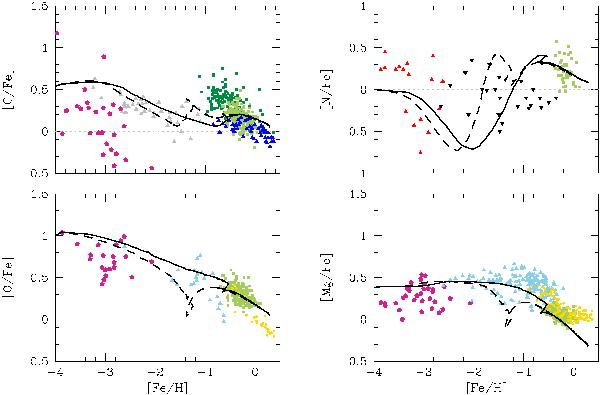Fig. 3

Abundance patterns [X/Fe] vs. [Fe/H] for carbon, nitrogen, oxygen and magnesium as predicted by the two-infall model (solid) and by the two-infall + outflow model (dashed). The adopted solar abundances are those of Asplund et al. (2009). Data are taken from Cayrel et al. (2004, fuchsia pentagons), Fabbian et al. (2009, gray triangles), Reddy et al. (2006, dark-green squares), Reddy et al. (2003, light-green squares), and Bensby & Feltzing (2006, blue triangles), Spite et al. (2005, red triangles), Israelian et al. (2004, black upside-down triangles), Gratton et al. (2003, light-blue triangles), Bensby et al. (2005, gold circles). At very low metallicities nitrogen is produced as a primary element, according to the Geneva yields including stellar rotation. These yields allow us to explain data at very low metallicities, but still we do not reproduce [N/Fe] between –3 and –2 dex. Primary nitrogen from all massive stars (not just highly rotating) would be necessary.
Current usage metrics show cumulative count of Article Views (full-text article views including HTML views, PDF and ePub downloads, according to the available data) and Abstracts Views on Vision4Press platform.
Data correspond to usage on the plateform after 2015. The current usage metrics is available 48-96 hours after online publication and is updated daily on week days.
Initial download of the metrics may take a while.


